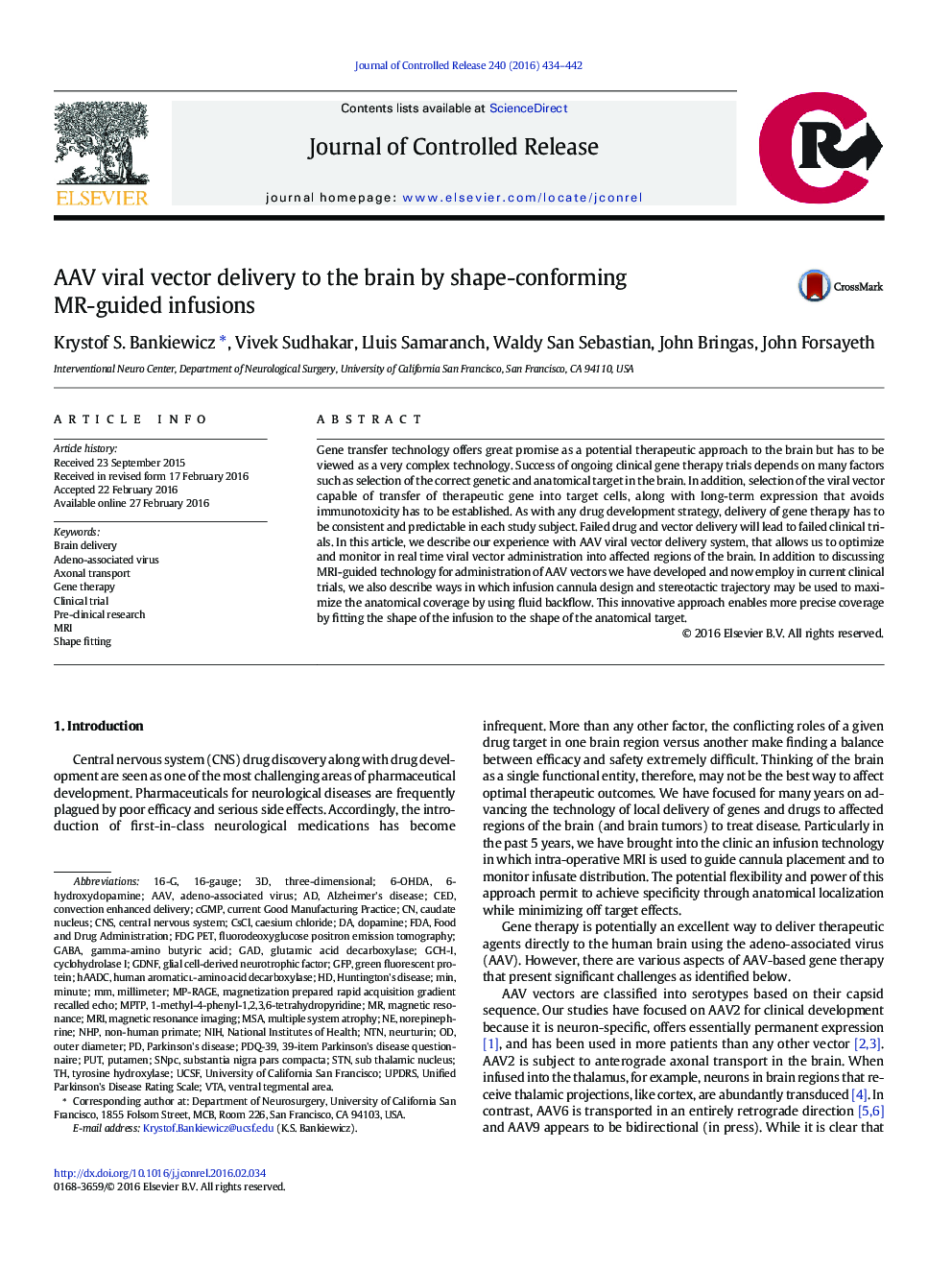| Article ID | Journal | Published Year | Pages | File Type |
|---|---|---|---|---|
| 5433994 | Journal of Controlled Release | 2016 | 9 Pages |
Gene transfer technology offers great promise as a potential therapeutic approach to the brain but has to be viewed as a very complex technology. Success of ongoing clinical gene therapy trials depends on many factors such as selection of the correct genetic and anatomical target in the brain. In addition, selection of the viral vector capable of transfer of therapeutic gene into target cells, along with long-term expression that avoids immunotoxicity has to be established. As with any drug development strategy, delivery of gene therapy has to be consistent and predictable in each study subject. Failed drug and vector delivery will lead to failed clinical trials. In this article, we describe our experience with AAV viral vector delivery system, that allows us to optimize and monitor in real time viral vector administration into affected regions of the brain. In addition to discussing MRI-guided technology for administration of AAV vectors we have developed and now employ in current clinical trials, we also describe ways in which infusion cannula design and stereotactic trajectory may be used to maximize the anatomical coverage by using fluid backflow. This innovative approach enables more precise coverage by fitting the shape of the infusion to the shape of the anatomical target.
Graphical abstractMagnetic resonance imaging-guided real-time convective delivery (MRI-RCD) is a state-of-the-art technique that allows AAV brain delivery with a sub-millimeter precision.Download high-res image (194KB)Download full-size image
